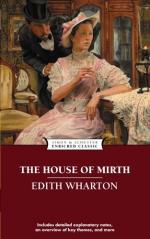|
This section contains 8,552 words (approx. 29 pages at 300 words per page) |

|
SOURCE: Gerard, Bonnie Lynn. “From Tea to Chloral: Raising the Dead Lily Bart.” Twentieth Century Literature 44, no. 4 (winter 1998): 409-27.
In the following essay, Gerard argues that Lily's death provides a break from Wharton's naturalism throughout The House of Mirth to allow for a moment of individual self-determination.
“Gad! what a study might be made of the tyranny of the stomach—”
—The House of Mirth (309)
Much has been made of the “square envelopes” fashionable society “showered” upon the “hall-table” of young Lily Bart's New York home (44). Much has also been made of the consequent “oblong envelopes”—constant reminders of the price of fashion—that were “allowed to gather dust in the depth of a bronze jar” (44).1 But the invitation and the bill are not the only envelopes tyrannizing Lily's society. Fashionable New York is equally subject to the “tyranny of the stomach,” if less conspicuously so (309). Wharton's New York...
|
This section contains 8,552 words (approx. 29 pages at 300 words per page) |

|


